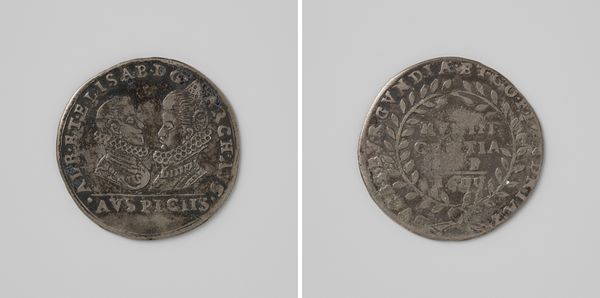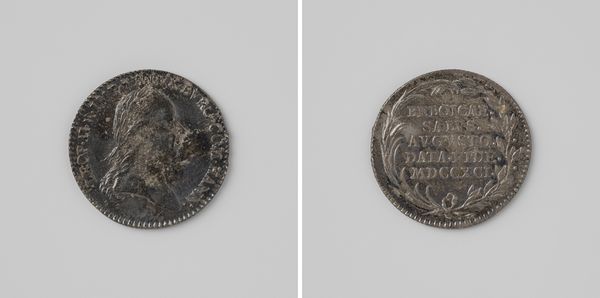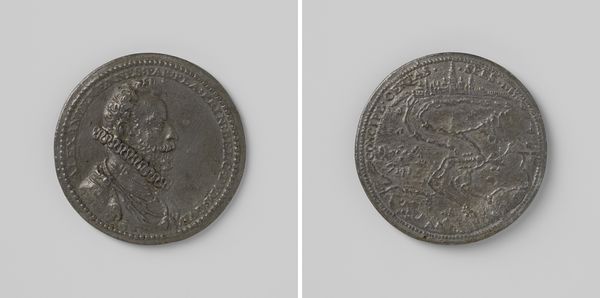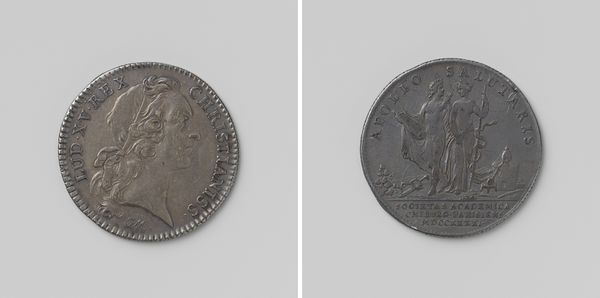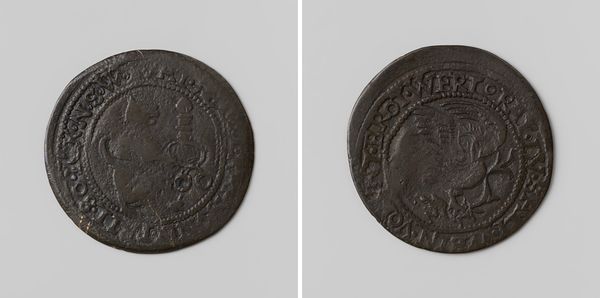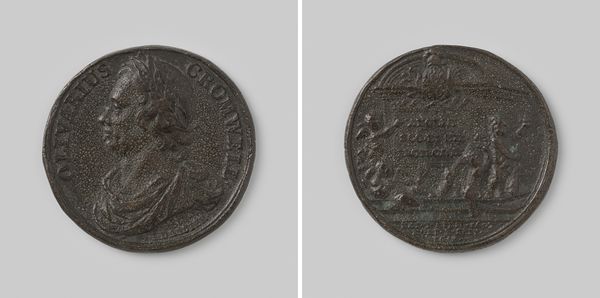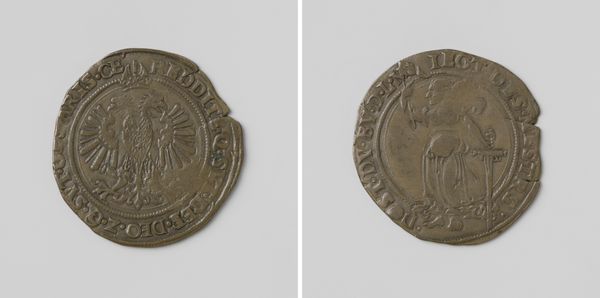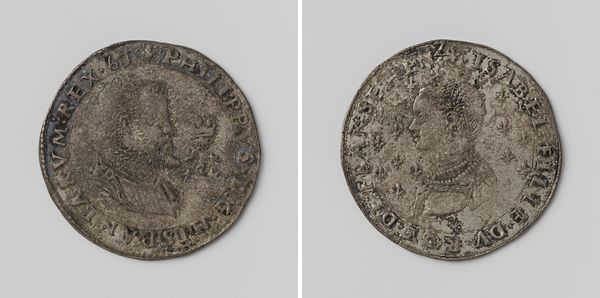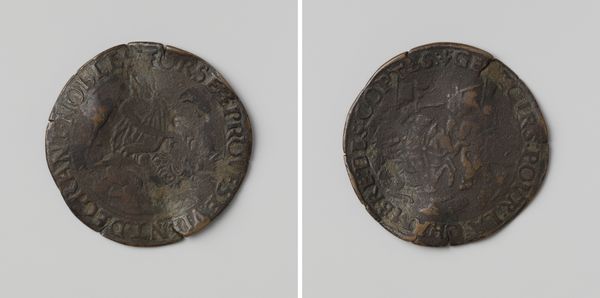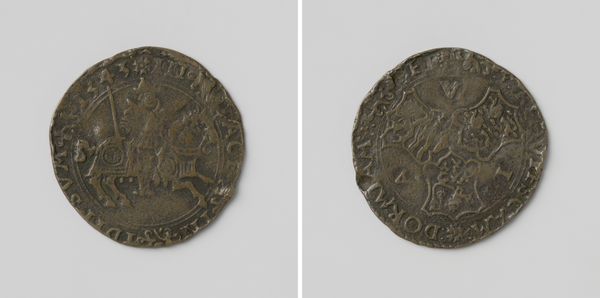
Munt van kwart franc van Napoleon Bonaparte, eerste consul der Franse Republiek Possibly 1803 - 1824
0:00
0:00
metal, sculpture
#
portrait
#
neoclacissism
#
metal
#
sculpture
#
sculpture
#
history-painting
#
miniature
Dimensions: diameter 1.5 cm, weight 1.24 gr
Copyright: Rijks Museum: Open Domain
Curator: This object is a coin: a 'Quarter Franc' minted for Napoleon Bonaparte when he was First Consul of the French Republic. It was crafted sometime between 1803 and 1824, very likely by Pierre Joseph Tiolier. Editor: My initial impression is one of constrained power. The sheer diminutiveness combined with the historical weightiness…it's striking. Curator: Indeed, the neoclassical style emphasizes control and order. Note the clean lines of Bonaparte's profile and the structured lettering that encircles it. The use of metal, likely silver in this instance, further underscores permanence and authority. Editor: Yet, consider the broader context. Coins are not simply about power; they facilitate exchange. This small piece of metal speaks volumes about the economic realities of France at the time, where even the 'everyday' bore the indelible mark of imperial ambition. Curator: Of course, we see how even something as utilitarian as currency became a vehicle for disseminating the image of Bonaparte as a symbol of the Republic, later Empire, very consciously modeled on Roman imperial prototypes. Editor: Exactly. The symbolic value is critical. Bonaparte is deliberately portrayed in a manner reminiscent of classical emperors. It suggests legitimacy through historical alignment, erasing any perceived 'newness' or instability. How very savvy. Curator: Let’s look at the reverse of the coin, with the words “QUART FRANC” centered in an ornamental laurel wreath. A pleasing harmony, really. Editor: Indeed. What the imagery conceals is just as crucial, though. Coins have always been used to propagate certain narratives while conveniently eliding other realities. While power is put on display for posterity here, it would be interesting to ask, “Whose story remains untold?” Curator: A relevant point. While my analysis is focused on its formal aesthetics, your reading rightly calls attention to the socio-historical dimensions of the piece. Editor: Precisely, looking at both can provide a well-rounded portrait.
Comments
No comments
Be the first to comment and join the conversation on the ultimate creative platform.
